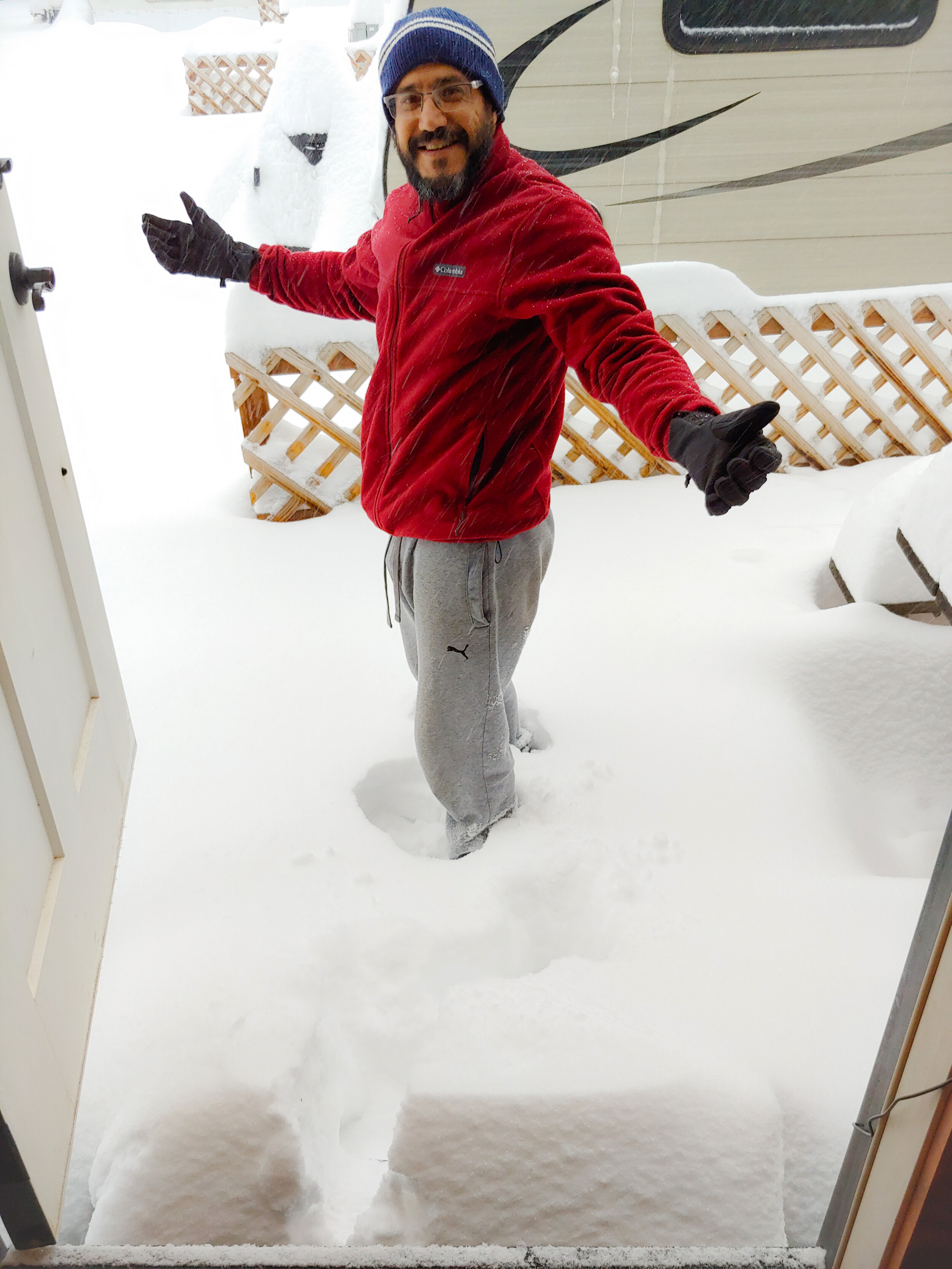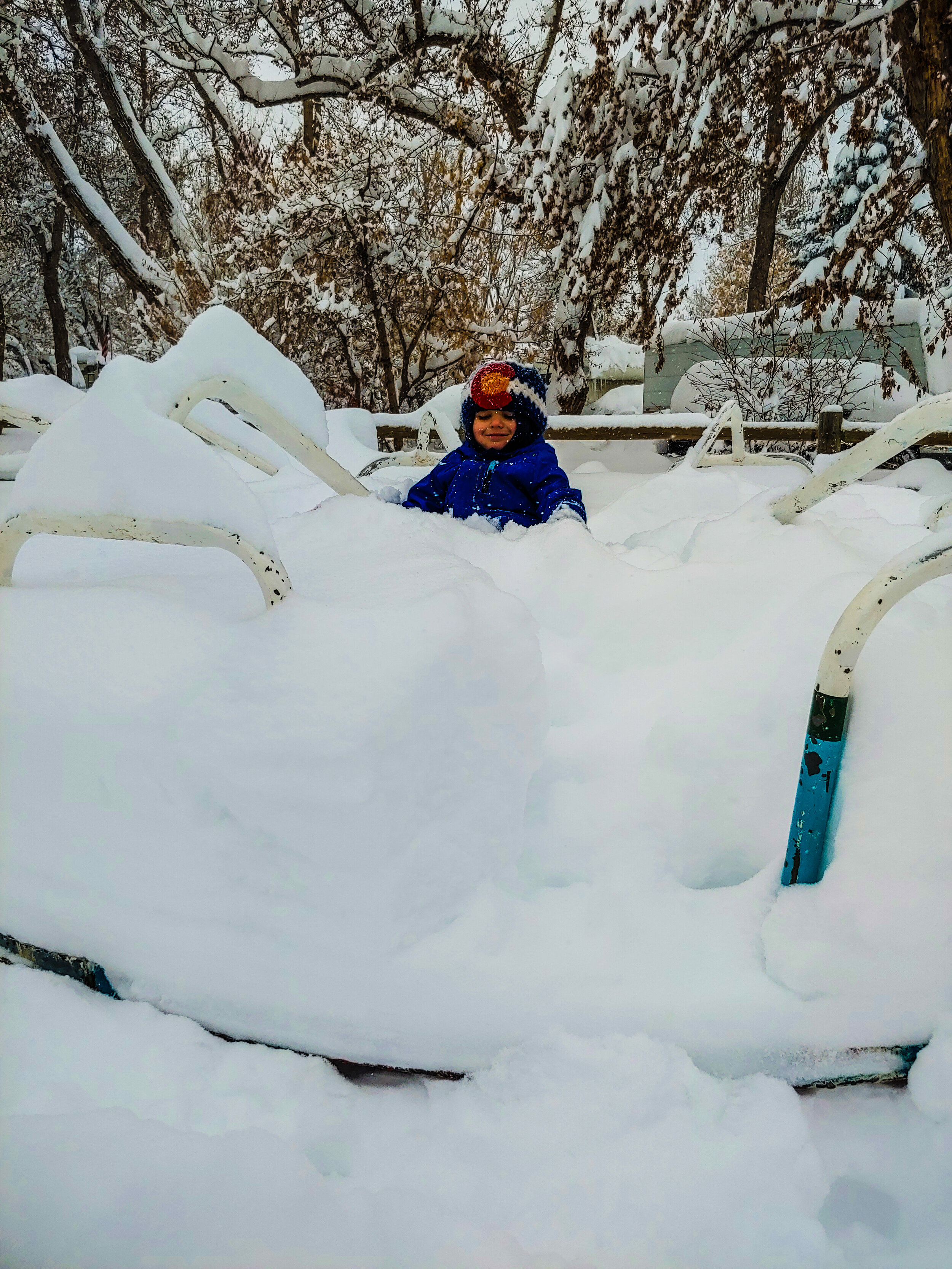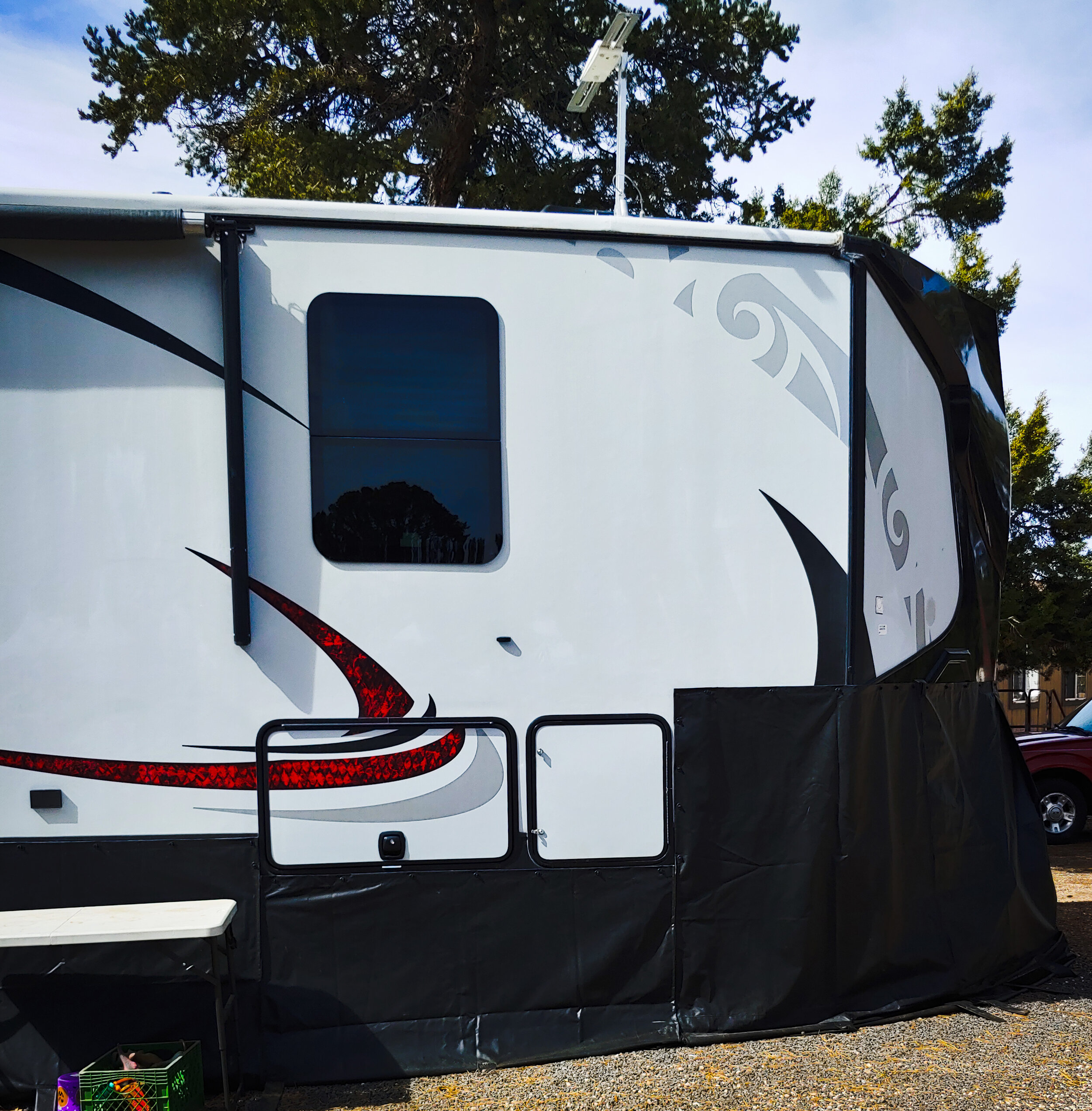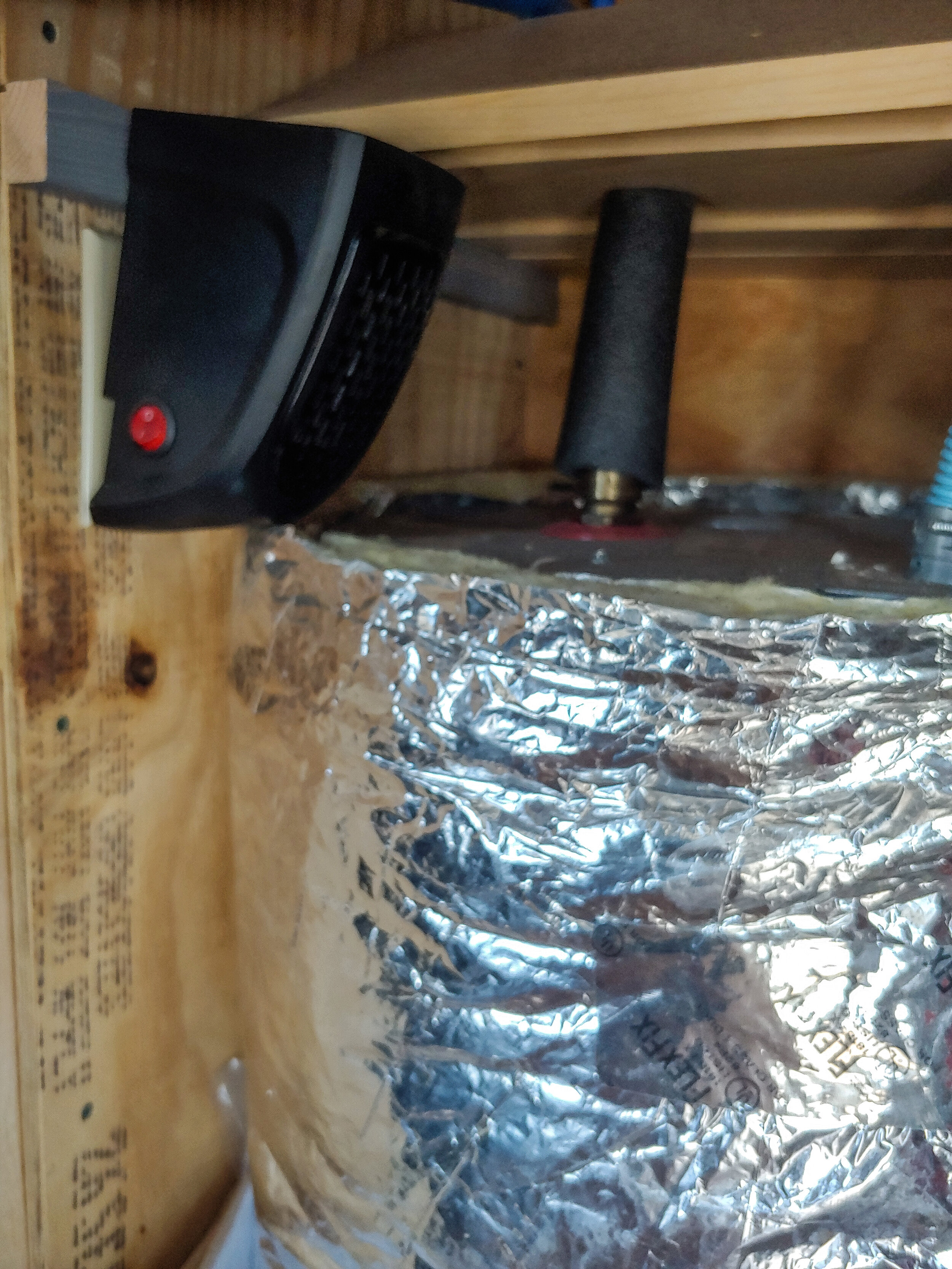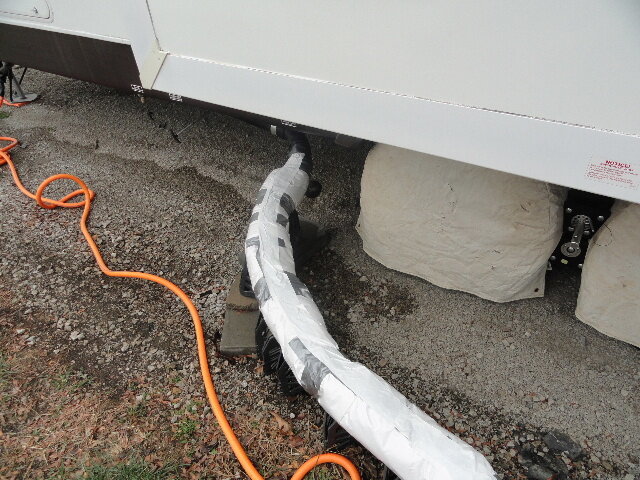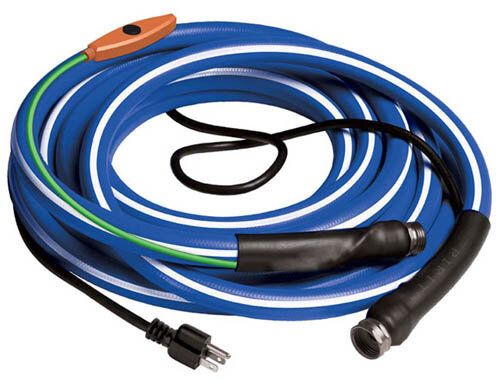Baby, it's cold outside

Well, we survived our first winter in the tiny home! Overall things went well, though there were a few hiccups that we have learned from. Many folks have asked how we handled the cold months with two little kids in such a small space, so here are a few of our lessons learned and tricks to keeping everyone sane.
Toddlers and Small Spaces
We are fortunate in our tiny house to have a living room separate from the sleeping spaces. This has proven critical when our family spends the day inside due to inclement weather. We are able to have books and toys in both the living room and the boy’s loft, which means we can easily separate the boys knowing they each have entertainment items regardless of who is upstairs and who is downstairs. On top of that, we try to have a variety of indoor activities so no one gets board. Tired of reading? Let’s build a marble tower or play with blocks. Feel like being creative? Let’s do some craft projects or puzzles. We have several board games that are family friendly, which means indoor family time is easy to accommodate. Need to burn some energy? Wrestling with dad is always a good time! Want to learn some new skills? Work with mom in the kitchen and learn how to help prep family meals. All of these activities are great for parent/kid teamwork and most can be suited to the kids playing together. Most of all, our kids seem happiest when we (the parents) are engaging them. We don’t have cable or options for much TV time, and neither kid has a tablet that they use to pass the time. Bottom line: if you engage your kids, it’s easy to find plenty of fun activities to do indoors.
Getting the Kids Outdoors
We are certainly an outdoor family – I think that is pretty evident in our lifestyle choices 😊 The weather has to be pretty terrible to keep us indoors long. Snow just provides an excellent opportunity to make snow people, or go for a slick ride down the playground slide. Rain is loads of fun for the kids with puddles and mud galore. Wind can be tough (especially when you are less than 30 lbs!) but can add a fun element to playing in the leaves, enjoying a swing ride, or playing on the merry-go-round (some of our campsites have had these). Warm nights are fun for campfires, but cold nights can provide some additional cuddling and make throwing pine cones in the fire even more fun as the movement keeps your warm. You may sense a trend here – all of these activities involve us the parents, engaging the kids. Telling the kids to just go outside just isn’t much fun (not to mention higher rates of trouble those kids can get into when unattended!). Play with your kids, you will never have a dull moment!
Lessons Learned with the Tiny Home
Our home held up well to the cold – staying warm inside the home was easy. The biggest obstacle for us was the exposed water pipes that are necessary when using camping hookups. There are a few things we did to try and combat the cold, but in the end the best option for us was to completely disconnect water from the house on cold nights. This means unscrewing the water pipes and totally draining the house of water – not a fun task when it’s cold and dark outside. Below are a few other things that worked (mostly):
Insulate your sewage – luckily, we did not have any issues with frozen sewage pipes, but basically this could result in sewage backing up into your house. NOT good. Hardware stores typically carry pipe insulation, and it’s worth the hour or two to insulate anything exposed. The downside to this is that it is temporary and needs to be done each season.
Get a heated water hose – I don’t know if we were just buying poorly constructed water hoses, or if we were in temperatures too extreme for the hose, but we went thru several heated water hoses during this past winter. Due to the number of hoses that broke on us, we ultimately decided that disconnecting the water was a safer option than potentially dealing with frozen pipes/water hose in the morning. However, when you have a heated hose that works, your water should not freeze before it enters your house.
Buy a small space heater – we plug a small temperature-controlled heater into the section of our house that contains the water heater and other pipes. This section of our house is the most exposed and seems to be the most effected by the cold. Having this heater on and set to a reasonable temperature means it only activates when it gets below the set temperature, and ensures we always have hot water (assuming the water is connected to the house). We also use a small heater we use to thaw any exposed pipes that may have frozen. For us, we have a one-inch section of pipe that is exposed no matter what – this is what most commonly freezes. Now that we know that, we can set the space heater on that section of pipe and ensure we are unfrozen within 30 min. Trust me when I say using a hair dryer is a waste of time. If that sounds like too much work, then completely disconnecting the water to the house is the safest and most effective way to ensure no frozen pipes.
Buy a skirt for your home – we did not ultimately do this, but when we are traveling less, we will absolutely do this. Skirting your home is basically insulating the underside of your trailer. This provides a few different benefits. Firstly, most RVs/travel trailers/tiny homes on trailers have some sort of exposed piping – by blocking airflow to that area and insulating the space, your chance of things freezing is minimized. Secondly, the floors of your house can get quite cold in the winter – again the underside of your house is completely exposed to the elements. Skirting your home helps keep the air under your house at a more stable temperature and doesn’t result in cold floors in the morning. In lieu of skirting, I highly recommend a nice pair of slippers or moccasins!
Every house is different, so the most important thing you can do is to spend some time getting to know your home. Isolate the areas that are more likely to suffer from extreme elements, and don’t be discouraged when your first solution doesn’t work. We have found tiny living an excellent opportunity to practice some flexibility; as a planner, this can be a hard lesson to learn, but a good thing in the long run!



